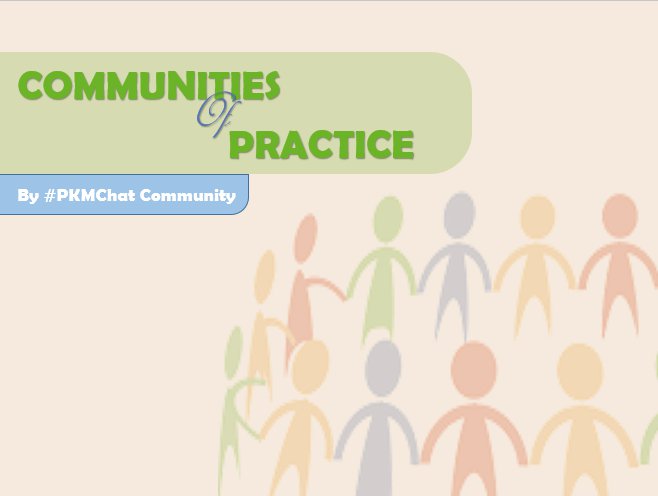Though a bit late, I am still joining in the ELHChallenge for this week. This week, David asked us to SlideShare our e-learning examples. The simple idea is to share something you’ve worked on, but, this time, using SlideShare. Since I already had an ineffective account on SlideShare, it was a good way to use the service . . . and that is one thing I love the challenges for, it engages several tools and skills and makes you keep learning as you attempt the challenges.
The Idea.
On Wednesday, I had participated in the #PKMChat twitter chat and we had spoken about Communities of Practice. The chat was interesting, engaging and I as a person learnt a lot, ready to identify and engage deliberately with my own CoPs. Then I decided I was going to blog on the topic, a simple reflection of the chat and my learning.
So when I saw the challenge in one of my CoPs, I decided to merge both together – Prepare a SlideShare on the chat topic and blog around it!
The Structure and Design.
This took a bit of time, as I thought through how I wanted to present my topic. I wanted to keep it as simple as I could, yet interesting to go through. So I decided to summarise each chat question and pick a few of the answers, one question per slide. I thought of using sticky notes for individual answers, and since twitter is limited to 140 characters, I was sure each answer will fit a note.
As for design, I have fallen in love with the transparent echo design (a previous ELHChallenge). I have used it over and over again for several designs I have done since the challenge and it is super easy to use, I have remained baffled at the result it gives me. So, there it was again this time around. To save time and minimise objects on each slide, I placed the background in a MasterSlide.
The Result.

I originally uploaded the PowerPoint file, but my fonts and design were greatly affected. So I decided to save it as a PDF and upload it, it solved the problem. Below is the SlideShare on Communities of Practice.
[slideshare id=59397405&doc=copspkmchat-160310231749]
Communities of Practice.
A group of people with similar interests, pursuing similar goals who interact together, for the purpose of sharing knowledge and helping one another in the pursuit of the common goal. Whether this interest is professional, social, work-related or even spiritual, it is a network of people that you interact together with (face-to-face or virtually) and you exchange ideas and knowledge.
For a CoP to remain healthy and active, members must be open, honest, patient and able to provide support for members. Members must be able to give feedback to help other members. Professionals and old members must watch out for quiet members or lurkers especially in a virtual setting and encourage them to be more active. They must deliberately invite and engage them in the discussion.
Members can feel disengaged in a CoP. Begin by evaluating your goal – Why did you join this group in the first place? Is it still relevant? If it is, raise the issue as a discussion and try to sort it out. If it is isn’t relevant anymore and you’re neither gaining anything nor helping anyone, then it may be time to quietly excuse yourself from the group.
CoPs can be created in school environments. Educators can come together to form a CoP, based on the subject they are teaching. For example, maths teachers can form a CoP and create a support for each other. School learning architects can facilitate CoPs among educators, especially when it relates to the use of technology in the classroom.
There is more in the SlideShare, view it above or view it here!
What do you think of Communities of Practice? Do you belong to any? How do you engage it and what benefits do you derive from it? Leave a comment below.
